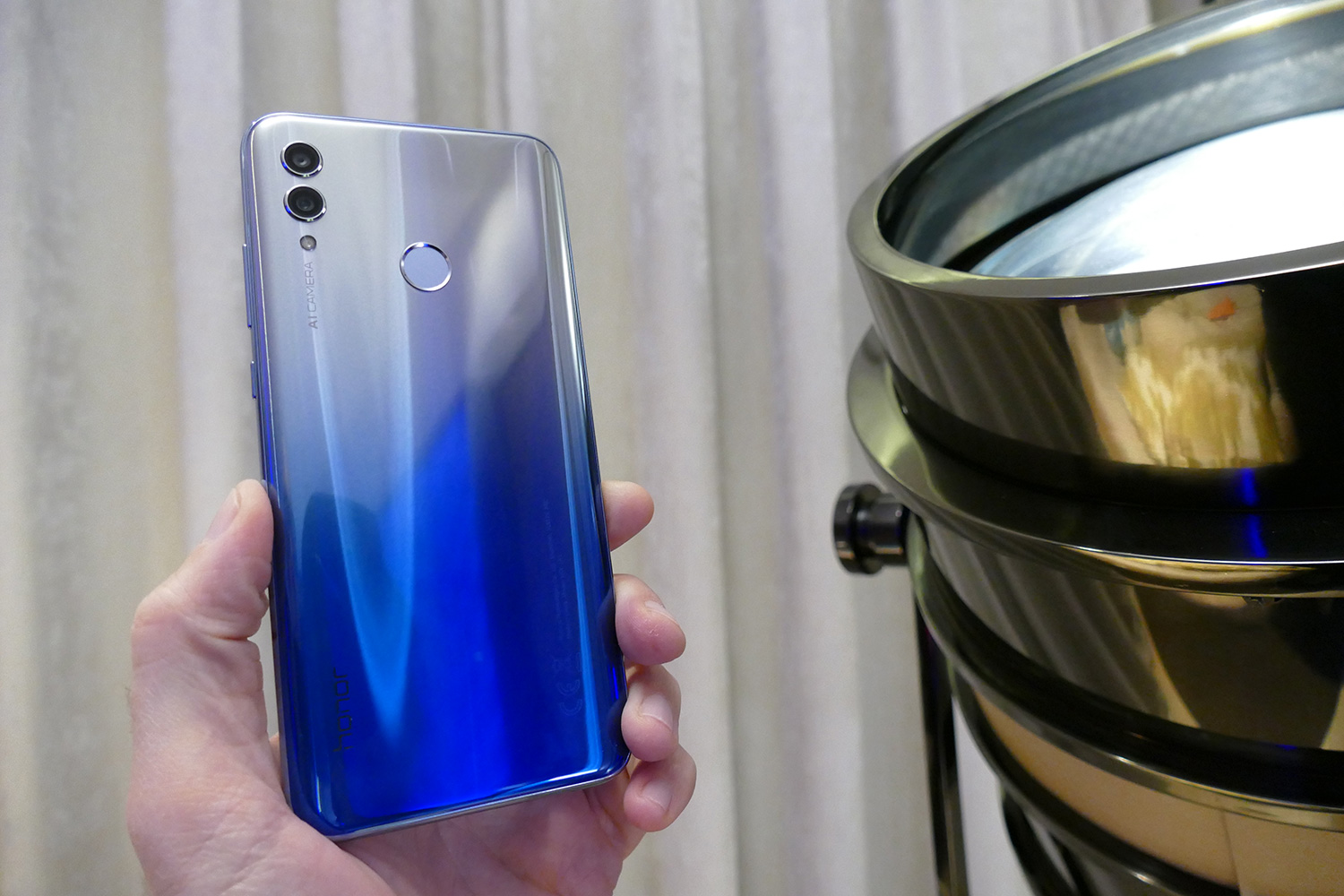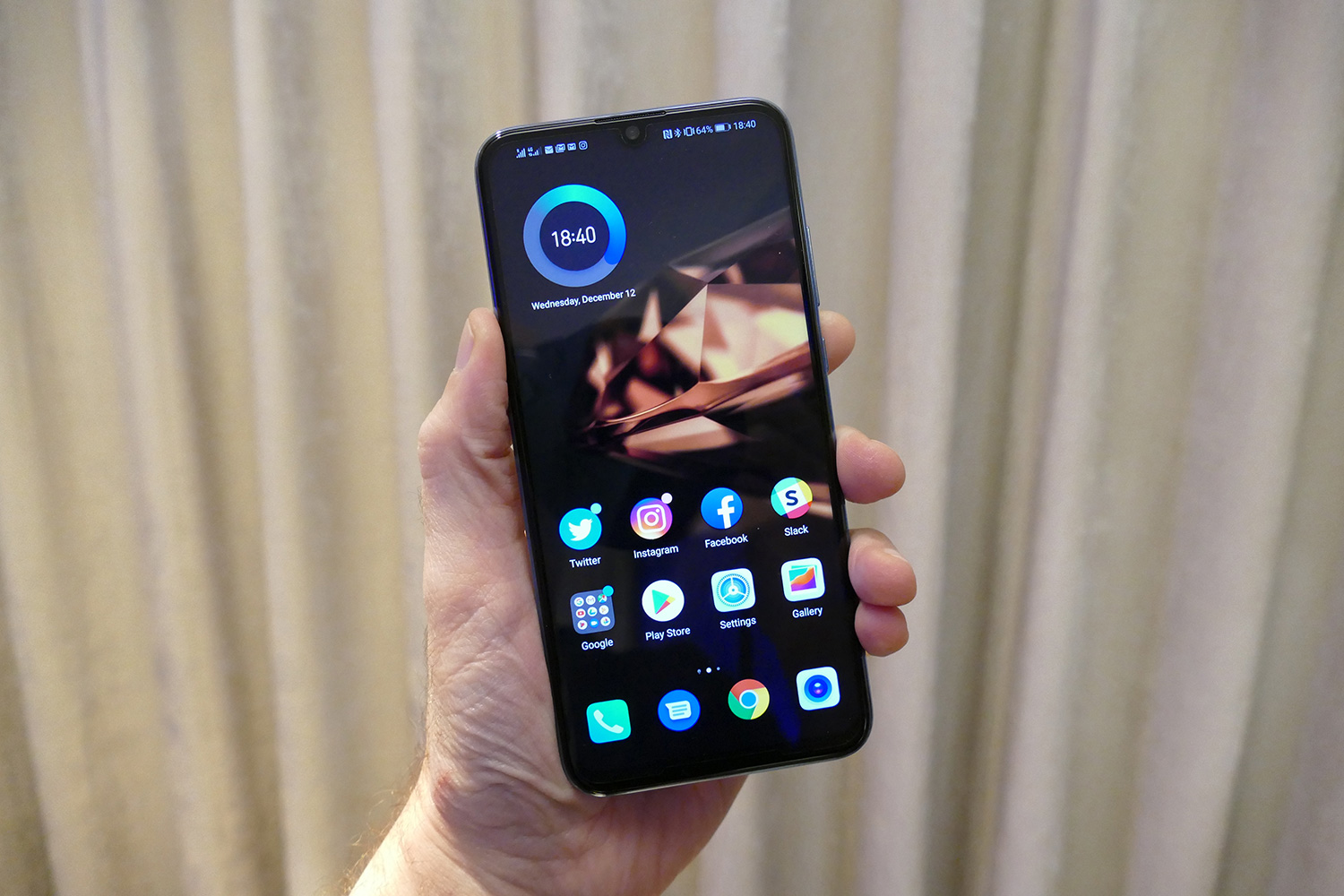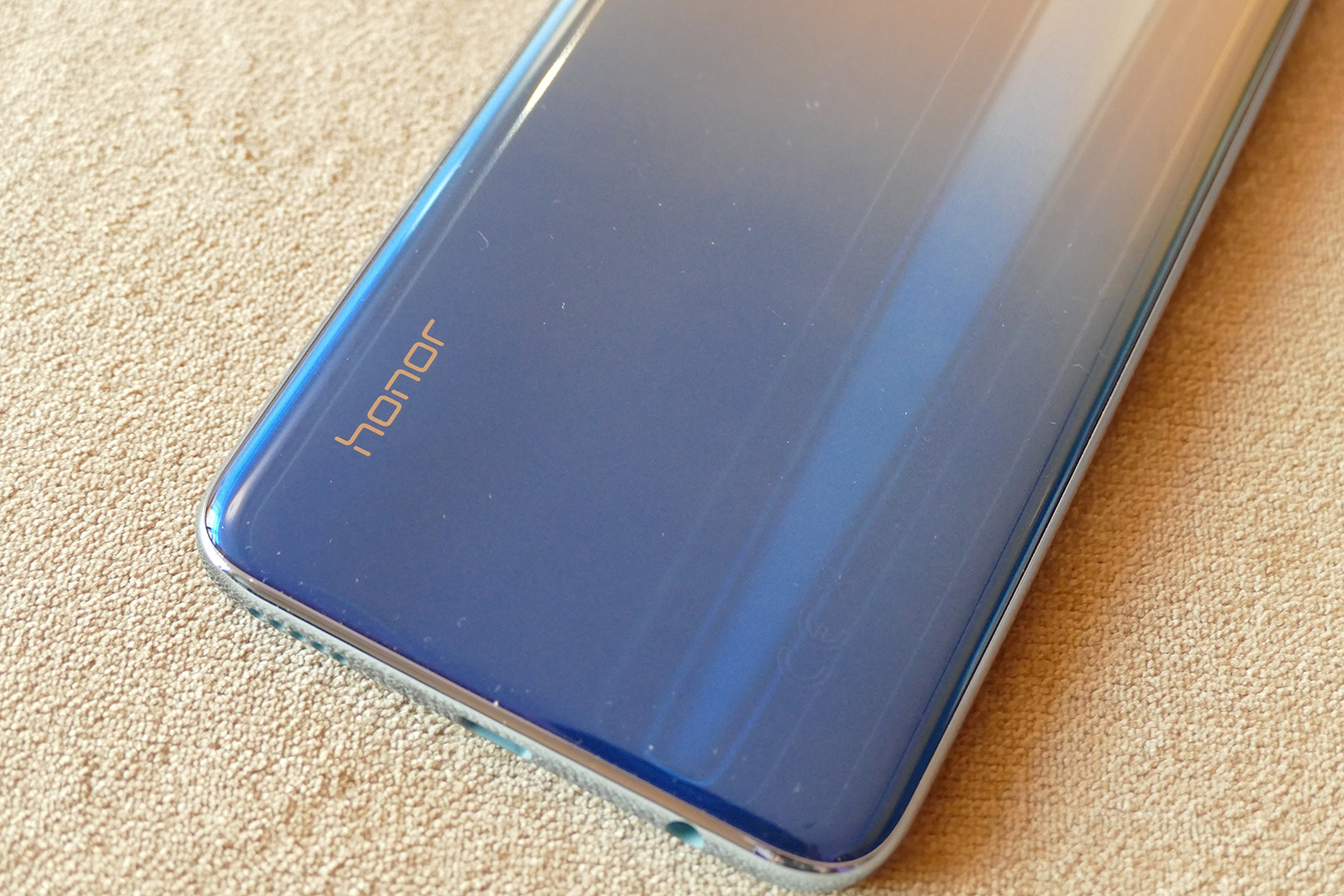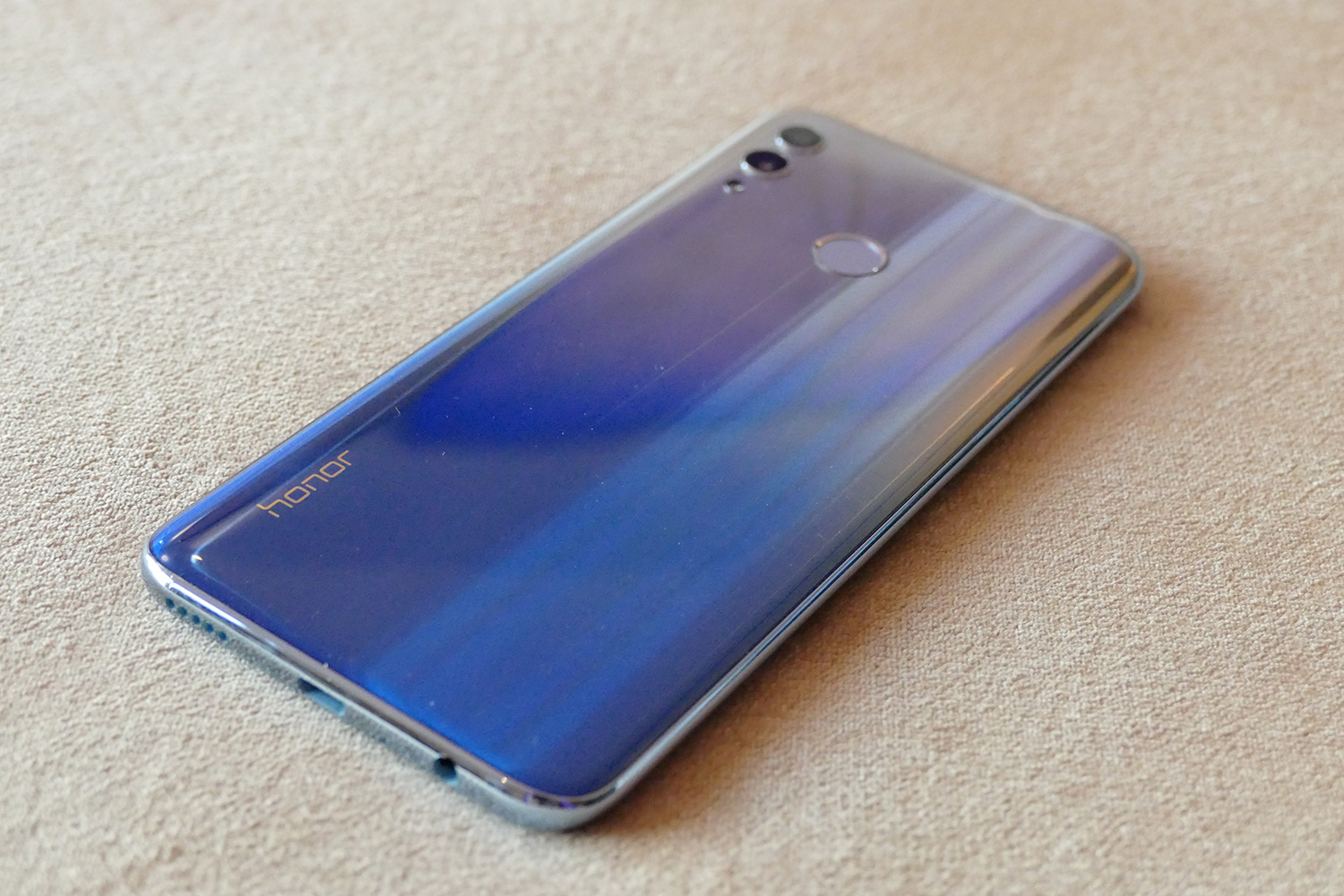Adding Lite to the name of a phone used to instantly drop its desirability by about 90-percent. Lite was synonymous with a device being all show and no substance. Being given an Honor 10 Lite on a recent trip to China gave us that slight sinking feeling, as we prepared to use a phone that may frustrate more than it delighted.
We were wrong. The Honor 10 Lite actually did the opposite, and impressed us over the course of a few days, during which it was our main device. We’re not really that surprised at the Honor 10 Lite’s ability, as the Honor 9 Lite was also a highly capable phone. The sequel goes one step further in design.
Here’s our impressions of the phone, which is not getting the full review treatment as it’s not available to buy in the U.S., and is still waiting for its U.K. and European launch at the time of writing.
Striking design
It’s a little beauty. The body is plastic, unlike the glass Honor 10, and our version in the pictures is the one to buy. The color scheme is sky blue, and it fades from a deep blue at the bottom of the device to a chrome-like silver at the top. We saw and loved the same look on the Honor Magic 2, and are happy to see it replicated here so effectively. It also comes in black and red.
It’s wonderfully lightweight at 162 grams, so it hides nicely in a pocket, while the compact dimensions make it very holdable. The screen — an IPS LCD — measures 6.2-inches and has a teardrop notch at the top, giving an 83-percent screen-to-body ratio. There was once a time this was reserved for the most expensive phones you could buy. Now, you can get it on a reasonably priced mid-range phone, and it’s very welcome.
The Honor 10 Lite incorporates many of the best design elements from older phones along with a modern style.
The 8mm thick chassis is masked effectively with curved sides, and a “floating” screen above the body itself. The fingerprint sensor is perfectly placed top-center on the rear, and very fast. Yes the chin bezel is quite large, but there is a 3.5mm headphone jack on the bottom of the phone, so it can be forgiven. What makes us like the Honor 10 Lite is that it incorporates many of the best design elements from older phones — rear fingerprint sensors, great color schemes, and large screens — along with a modern style, without having too much experimental tech, such as in-display fingerprint sensors or pop-up cameras.
This makes it instantly usable, as well as incredibly satisfying to own. You’re really only compromising on materials, and even then, the plastic looks and feels very much like glass until examined very closely.
Camera
The Honor 10 Lite has a dual-lens camera on the back, made up of a 13-megapixel, f/1.8 aperture main sensor and a secondary 2-megapixel sensor. The selfie camera has 24 megapixels. This is fairly standard across many mid-range phones today, and there’s a good reason for this — the pictures it takes are solid, and easily good enough for social networking purposes. The f/1.8 aperture even means low-light performance is decent too. In fact, the Honor 10 Lite held its own against the phones in this camera test — most of which cost a lot more — in night time photos.
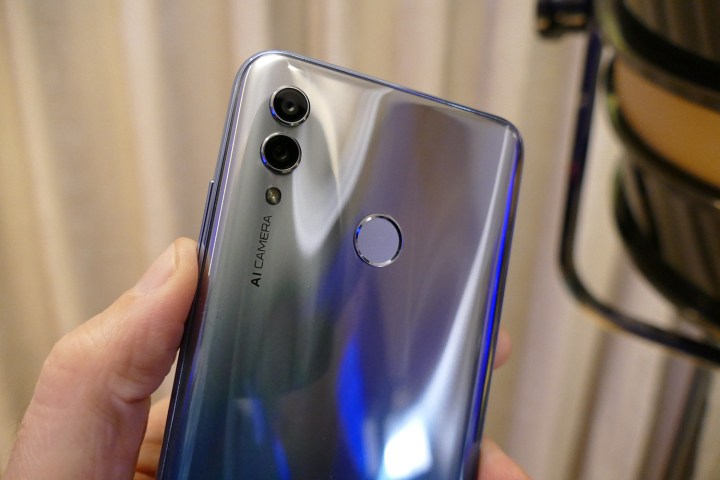
It’s low-light ability comes from the addition of Huawei’s Night Mode, which debuted on the P20 Pro, which holds the shutter open for longer than usual and employs artificial intelligence to sharpen the final photo. While noise is evident when you look closely, it’s not terrible, and the brightness and contrast levels will impress casual admirers when shared online. There’s also a portrait and aperture mode for bokeh shots.
The selfie camera has many megapixels, an aggressive beauty mode, and artificial intelligence-driven enhancements. Most of this can be turned off, but the camera still seems to smooth skin out and add a glow that’s faintly unnatural. The portrait mode is also hit-and-miss, as the blur effects often misidentify edges. Accomplished selfie-takers will be happy tinkering with the different modes though.
Performance
It’s here where you’ll realize this is not an expensive smartphone. Huawei’s Kirin 710 processor, an octa-core chip with a 2.2GHz/1.7GHz clock speed, powers it, and there is the option of 3GB or 6GB of
It’s here where you’ll realize this is not an expensive
Performance woes will most often appear when playing games. The Honor 10 Lite has the GPU Turbo software feature to enhance gameplay, which is a bonus, but does it help? We ran the gaming-centric 3DMark benchmark test using the Sling Shot Extreme program, and it scored 1,139 (Vulkan), and 823 (OpenGL). This beats the Moto G6 and the Nokia 6 (2018), two phones we will later compare it to. We played Reckless Racing 3, and it was smooth, fast, and fun — pretty much all we want from a game. The sound from the standard speakers is tinny though.
Android 9.0.1 with EMUI version 9 was installed, so it operates like most other Huawei and Honor phone. It even includes the latest gesture controls seen on the Huawei Mate 20 Pro, which we like and have used consistently on the Honor 10 Lite. EMUI needs patience to set up correctly, as the menus are dense — despite a recent cleanup — and the options are many. Take your time, experiment with layouts and options, and it’ll be worth it.
Another winning feature is dual-SIM support. We tried this out in Hong Kong and mainland China, where having two operational SIMs was helpful. The SIM cards were easy to manage, and connection speeds were impressive, even when network congestion tried its best to ruin our day.
Battery
It’s very disappointing to see a Micro-USB port on the bottom of the Honor 10 Lite. There is less demand for the newer, faster, and more convenient USB Type-C connector in China and various other markets, especially at this price, but that doesn’t stop us wanting the newer connector for future-proofing’s sake.
Otherwise, the battery news is good. The 3,400mAh cell easily lasted a day, with around 10-percent left after a heavy day’s use. You’ll have to charge it each night, but you can be safe in the knowledge it will cover you during the daytime even when you use it hard.
Price and availability
Announced for China at the end of November 2018, the Honor 10 Lite is also expected to be released in India, the Middle East, Europe, and elsewhere in the world in 2019. In China, the cheapest Honor 10 Lite costs the equivalent of $200, while the most expensive costs around $275. In the U.K., the Honor 10 Lite may cost as little as 180 British pounds. This is less than the Motorola Moto G6, and around the same as the Nokia 6 (2018).
A U.S. release has not been announced.
Conclusion
The Honor 10 Lite is evidence the word Lite no longer means having to seriously compromise. No, you won’t get quite the same experience on a $200 phone than you will on an $800 phone, but that’s to be expected. The surprise is the distance between them is not a vast gulf anymore.
Editors' Recommendations
- This Android phone is so bad I couldn’t review it
- I thought I’d hate this cheap Android phone. It proved me wrong
- No, the Journal app on your iPhone isn’t spying on you
- You won’t believe how I improved my phone’s battery life
- Motorola’s newest cheap Android phone looks shockingly good





